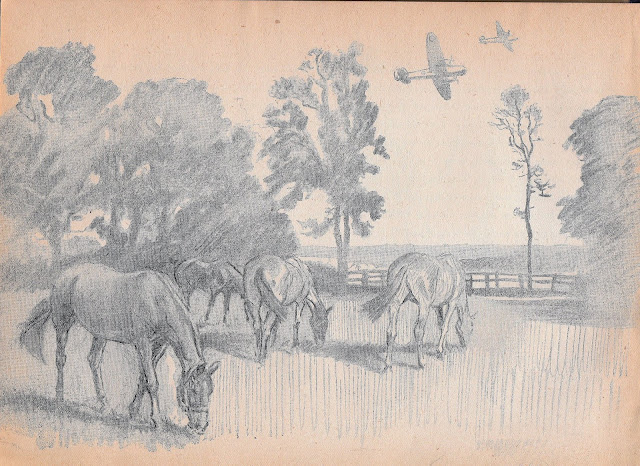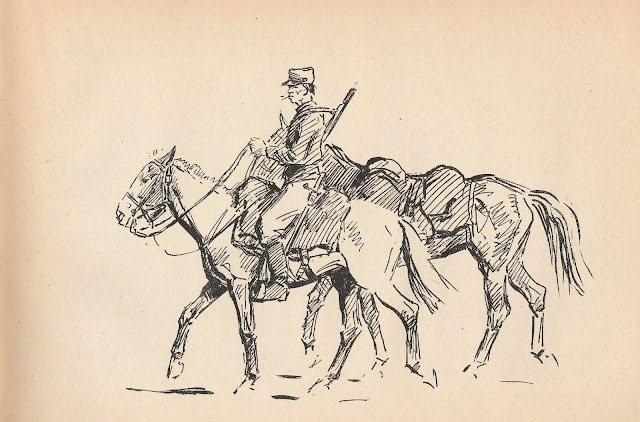Horse books are important parts of every model horse collector's life. They help give us a context for the figurines on our shelves.
One of the first English horse illustrators I became familiar with, was Lionel Edwards. I found many examples of his artwork I hadn't seen before, in a 1947 book called "Horses and Riders" by Peter Lunn. I found it at a library used book sale last week for $2.00.
The combination of Edwards' equine art with short stories by writers of the day is compelling. Perhaps the best thing I can do is show you some examples of each from the book. I'll put links to more information on them after the illustrations.
Poet Siegfried Sassoon:
 |
| "Horses...are essentially unmodernisable and have absolutely refused to move with the times...Low flying aeroplanes in the late war did not even cause them to lift their heads from the grass they were munching..." -- Siegfried Sassoon |
 |
| "All the essential elements will still be there -- the smell of a winter morning, the behaviour of the animal, and the sense of personal adventure and physical well-being of the rider." -- Siegfried Sassoon |
Lionel Edwards himself:
 |
| "Outside the Bank the traffic was dense, but all horse, and therefore it smacked of the countryside. Horse buses, brewers' drays with red-capped drivers, hansom cabs, donkey carts and even immense hay wagons bringing in food for London's vast population." -- Lionel Edwards |
Lady Cynthia Asquith, remembering the stories her grandmother told her about her own first horse:
 |
| "'He was piebald, which I thought gave him an enchantingly circussy air, but my father -- your great-grandfather -- said he looked like a ball made out of blotting paper.'" -- Cynthia Asquith |
 |
| "'I decided I must make an indoor pet of my horse.'' -- Cynthia Asquith |
Author and equestrian A. F. Tschiffely, who famously rode from Argentina to New York City in the 1920s.
 |
| "Oh yes, I remember him so well that he seems to be standing before me as I'm writing these lines. He was a lovely chap, a golden-red and snow-white skewbald with a bristly mane, proud fiery eyes and a long flowing tail...When I first laid eyes on jim, my joy was so great that I forgot everything else; my greatest desire was fulfilled; I owned a horse!" -- A. F. Tschiffely |
 |
"Ever since my early childhood, when I was the proud owner of the skewbald rocking-horse, I have had a liking for animals of 'broken' colours.... Probably this is why I immediately took a fancy to the newly arrived piebald whose peculiar black patches made him look like a circus horse." -- A. F. Tschiffely
Stage and TV star Vic Oliver:
"I shall never have another friend like him. He was the first horse I owned, and although not of aristocratic breed, he had the meekness of a lamb and the courage of a lion." -- Vic Oliver
Laurian Jones was the daughter of Enid Bagnold, author of National Velvet.
"My youngest brother was to ride Jim in the second class, that for the best pony under thirteen hands two." -- Laurian Jones
Here are biographies of the artist and the authors:
Lionel Edwards:
Siegfried Sassoon:
A. F. Tschiffely:
Lady Cynthia Asquith:
Laurian Jones:
|
















